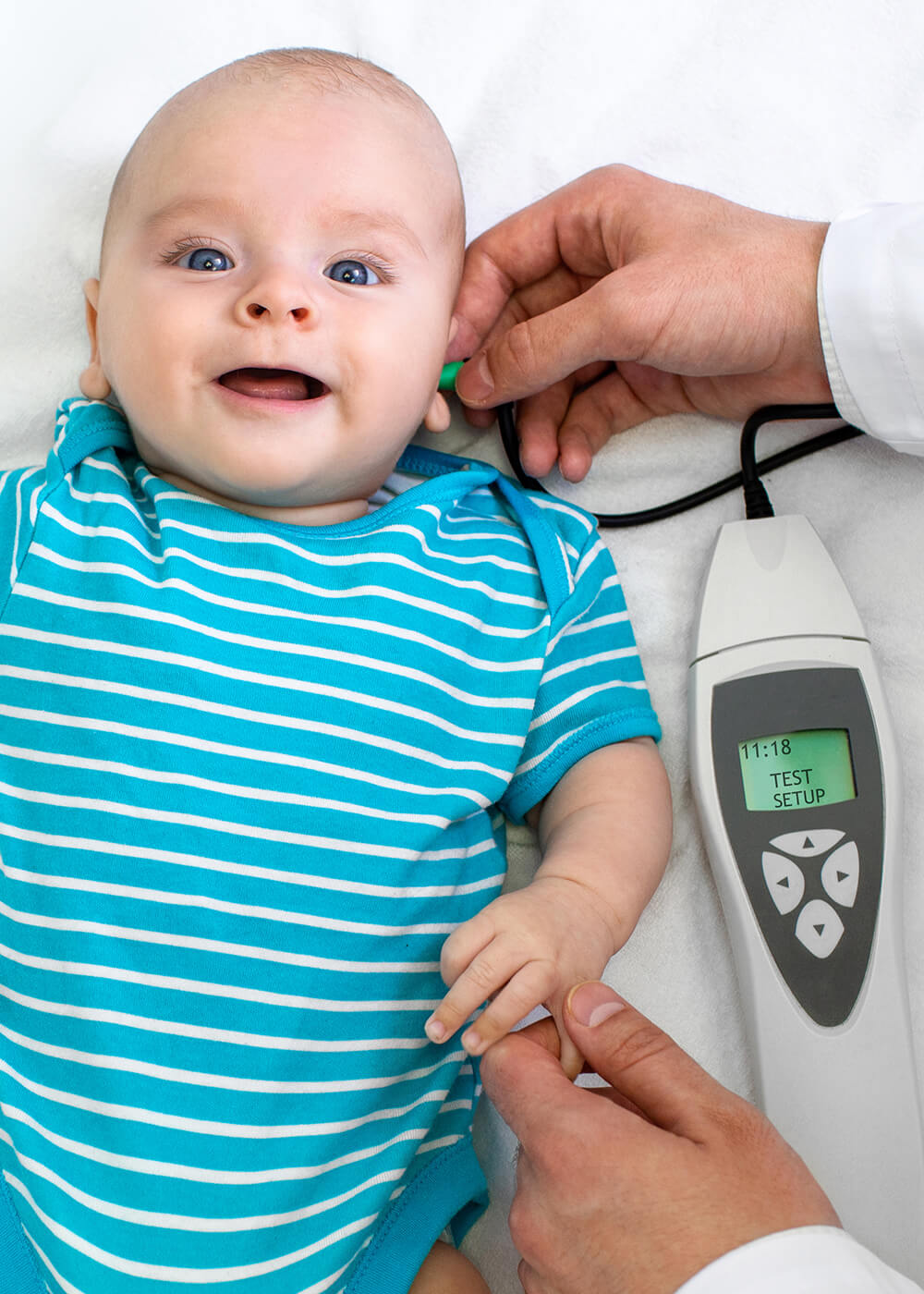Otoacoustic Emissions Testing
Resnick Audiology is proud to provide otoacoustic emissions tests to patients of all ages. Otoacoustic emissions tests help establish the status of the cochlea, or inner ear, and to determine the impact of noise exposure on the inner ear.
What Are Otoacoustic Emissions?
In order to understand otoacoustic emissions, it’s important to know the three main parts of the ear: outer, middle, and inner. The outer ear is the part of the ear that is visible from outside the body, up to the eardrum. The middle ear is a dry chamber (the “tympanic cavity”) where sound is prepared for delivery to the inner ear. This is accomplished by a chain of vibrations starting at the eardrum and working through the three smallest bones in the body: the malleus, incus, and stapes. The inner ear is home to the cochlea, where the mechanical energy of sound is converted into the electrical signals that are understood by the brain.
Inside the cochlea, there are some 16,000 tiny, hair-like cells, called “stereocilia.” Each of these is responsible for sending signals to the brain at a particular pitch. But the ear does not work completely as a one-way street: as the stereocilia vibrate in response to environmental sound, they also create a small amount of sound of their own, which is audible back inside the middle ear. If they are not functioning properly, they will not create any sound, just as they do not pass any sound on to the brain.

How Does Otoacoustic Emissions Testing Work?
Otoacoustic emissions tests are completely painless and non-invasive. The test is delivered via two small probes, which are both placed in the outer portion of the ear that is being tested. One of the probes emits sound, while the other is a microphone that measures any sound being echoed back. Unlike other hearing tests, the patient is not required to respond to these sounds in any way. This makes the otoacoustic emissions test ideal for testing infants—who often sleep through the procedure—or others who may have trouble responding.
When the cochlea is functioning normally, it produces four different types of otoacoustic emissions:
- Spontaneous - These occur naturally, but are not a response to any sound stimulus.
- Transient - Response to sounds with a short duration.
- Distortion Product - Soft echoes produced when two different, varied tones are played at once.
- Sustained-Frequency - Responses to continuous, single tones.
Otoacoustic emissions testing measures all of these responses. If hearing loss is greater than 25–30 dBHL (decibels hearing level), none of these responses will be produced. Some varied responses between the different types of otoacoustic emissions might also indicate different forms of hearing loss, which may be treatable.
Treatable causes of hearing loss that an otoacoustic emissions test may identify can include:
- Abnormal pressure in the middle ear, perhaps due to infection
- Swimmer’s ear
- Damage to the eardrum
- Otosclerosis, which is an abnormality of the bones in the middle ear
- Cysts at various points in the ear or ear canal

Should Everyone Have an Otoacoustic Emissions Test?
Otoacoustic emissions tests are generally used as a screening in infants and those who are not able to respond to pure-tone hearing tests. They can give a general indication of whether hearing loss may be an issue, but do not provide the same accuracy as a pure-tone test when it comes to measuring exact hearing loss and fitting hearing aids. They can help identify some differences between sensorineural and other types of hearing loss, and help determine what treatment is best for an individual’s hearing loss.
Typically in adults, otoacoustic emissions tests are used in concert with standard audiometric exams, like pure-tone and speech tests, as well as tympanometry. They can help identify non-organic hearing loss, which is difficult to identify by other means.
Dr. Resnick has been a practicing audiologist since 1997, with extensive experience in pediatric and adult audiology.
Before starting his own practice in Manhattan, he worked in medical facilities, notably founding the Hearing Resource Center at Lenox Hill Hospital and serving as the Audiology Director at Columbia University Medical Center Eastside. He has lectured extensively, and maintains a strong interest in new hearing aid technology, as well as hearing conservation for musicians.
Call us at 212-203-0792 to schedule an appointment and get tested.
